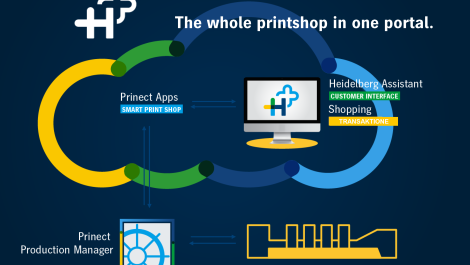Head of creative development, Frazer Church
DST tasted double success at the recent Digital Printer Awards. Andy Knaggs visited to discuss what’s driving growth, including growth in print, for the company.
More data and more conversations with customers about multi-channel campaigns: this is the direction of travel for double-Digital Printer Award winner DST, which was successful at the awards with an ongoing variable data application for cruise company Fred Olsen, and a cross media execution in support of its own customer event.
Head of creative development Fraser Church believes that customers are starting to see the value of these twin components in a marketer’s toolbox, and are embarking upon a journey of evolution with their marketing and transactional communications that will maximise impact and results.
‘As a business, we are now very much split into three areas: helping customers discover about their data; helping them organise and enhance it; and helping them analyse and then plan campaigns across media. We are media-neutral as a business,’ he told Digital Printer.
‘Our focus is on trying to provide one end-to-end solution – everything from organising and collating customer data to producing their communication; an intelligent communication based on their objectives. We always think of it as increasing sales but it can be reducing propensity to call the call centre or making it easier for them to manage their businesses more effectively. It’s about understanding our customers’ objectives, as opposed to just producing a communication. It is customer-led communications.’
Data is becoming available from an increasing variety of sources, he continued, including operational and transactional data, campaign response data and consent and preference data, so that DST’s clients have a better idea of how and when their customers want to be communicated with and what content is most relevant for that communication. Often this data is in silos and DST is able to offer a service that pulls it together, collates it, analyses it and supplements it.
‘This industry should see it as an enormous opportunity. Some companies can just do data segmentation or just compile documents or just print them,’ said Mr Church. ‘The value we are finding is where companies want to work with a supplier across the whole gamut, because life is getting too complicated. We are trying to find the opportunities and giving them more intelligent campaign management. That’s very important. Print is still an enormous area for us and in 2014 we printed more packs than we did in 2013, but we are sending a lot more digital communications out too.’
Customers are evolving and DST is too, he said. Relationships are now often with CRM managers and heads of customer experience, rather than just the purchasing and marketing managers. The common denominator is that they all realise that they must understand their customer and communicate with them based on that understanding. For DST, the growing importance of dealing with Big Data has led to the formation of an internal data science department – DST Applied Analytics – which looks for trends in client data and provides recommendations on what, how and when to communicate with the customer. DST’s is a forward-looking view as well, as Mr Church adds: ‘We see print working very much alongside digital channels and formats, and we are making sure we are flexible for channels that might not yet exist today.’
The company is also getting increasingly involved in creative direct mail work and has been running creative DM workshops as a spin-off from the Engage event that it produced the award-winning cross media campaign for.
To help service this part of the market, DST has developed a bespoke near-line finishing solution called Fusion Pack for its Kodak Prosper press in Nottingham. The technology can create a letter and an envelope from the same sheet of paper, using a wide range of paper stocks, with die-cutting and gluing enabling different formats and shapes to be produced on the fly. It can handle run lengths from 10,000 to millions.
‘We’ve been working on the idea for a year or so now,’ said Mr Church. ‘We’re talking to customers about it but we haven’t physically marketed it yet. We love the quality of print with variability of data and its 100% matched because it’s a single sheet of paper. We can maximise postal discounts, there’s no wastage and clients have absolute creative freedom on personalisation and versioning. We are trying to inspire clients by utilising data, presenting it in a creative way and ensuring that it works really hard for people.’





